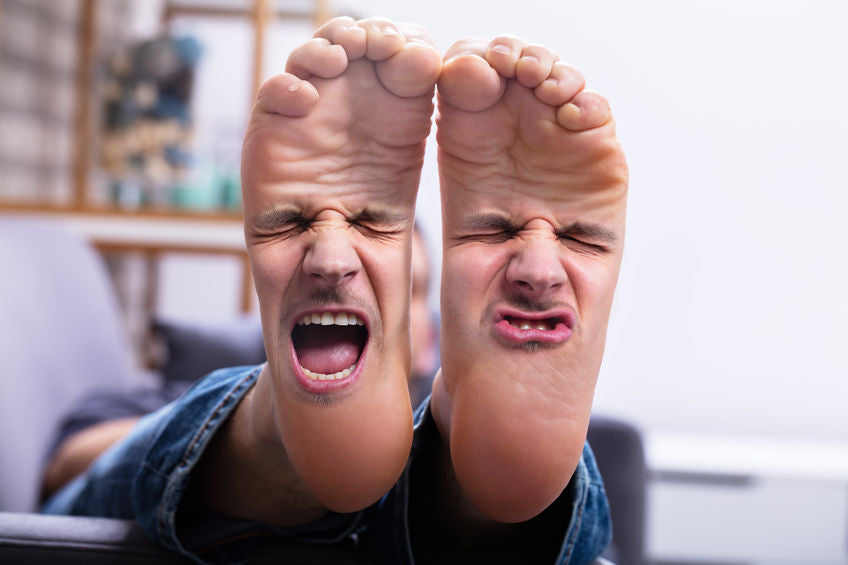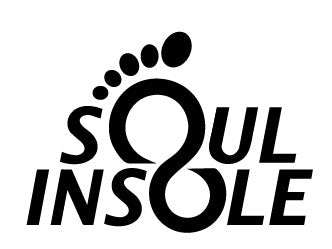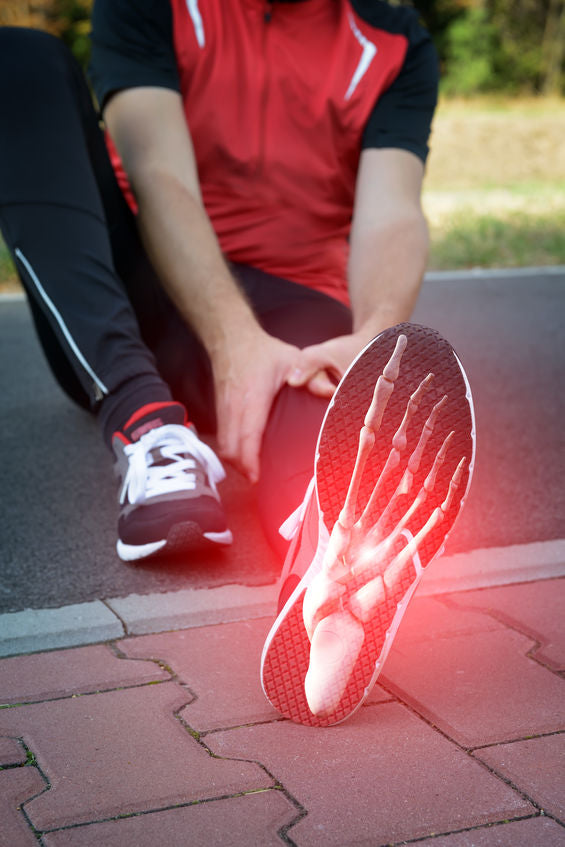
How to fix Excessive Supination and Overpronation
Pronation is involved in the foot's natural way of moving from side to side when a person walks or runs. Supination and pronation are parts of the stride. Supination of the foot occurs when your weight rolls onto the edges of the outer edges of your foot. Over supination also goes by the name of under pronation or Excessive Supination. Overpronation of your foot would mean the opposite of Excessive Supination. Overpronation is the collapsing of the arch of the foot in an excessively downward or inward manner. People also refer to overpronation as the condition of flat feet. Overpronation is generally more common than supination.
Our feet are the foundation of our body and even a small malfunction of the feet can throw off our entire body alignment. Supinated ankles, supinated heels, supinated feet etc. can throw off entire body posture and alignment resulting in body misalignment and imbalance. When it comes to your body, supinated ankles can’t be ignored. Let’s see what exactly is supination and how you can deal with it and get your proper body alignment back.
Supination
During a normal stride your foot should roll inward a bit i.e. your foot should pronate such that your weight is upon the ball of the foot and then you push off the big toe. In case you are supinating, the majority of your weight will fall towards the outside of your foot and instead of the big toe you will have to push off from the outer toes. You also may notice extra wear and tear on the outer corner of the heel edges of your shoes. The more that the shoes wear down on the outer corners, the more these shoes will allow for the foot to excessively supinate.
How is Supination caused?
It is generally an inherited problem with some structural problems in your foot i.e. it might even run in families. It may also be caused due to some weakened muscles in your foot, ankles and legs. This weakness may be because of -
- some prior injury leading to weakening of your foot muscles
- improper shoe selection like wearing tight and rigid shoes all the time
- body misalignment
- sedentary lifestyle
- too much exercise
- standing continuously for a long time
- if range of motion is restricted
- stiffness due to aging or arthritis
How can supination affect your entire body?
Since our feet are the foundation of our body, supination may cause the entire body to become misaligned. An excessively supinated foot cannot walk properly on uneven, irregular surfaces leading to issues with body posture and lack of balance. Over a period of time this can also lead to tension amongst different parts of the body like calves, hips and back. If this is prolonged, it may cause severe injuries.
How to treat supinated feet / supinated ankles / supination heel wedge ?
If you are suspecting that you are excessively supinating, or you are having a severe but unexplainable pain in hips, ankles, back and legs we suggest you to get a Gait analysis. Often treatment of supination depends upon severity and usually surgery is not chosen as a resort for treatment, so you can take a deep breath and relax. It should be noted that supinated ankles can cause severe pain, but they can quickly and easily be guided back to alignment through the use of supinated heel wedges.
Next, you can remember these points to help control excessive supination -
- Select shoes which are light in weight and have ample space inside for the toes.
- If you want to wear running shoes be sure that the shoes you are selecting are specifically made for under pronators or supinators. A majority of running shoes are designed for the opposite issue and are more suited for overpronators.
- You may try wearing orthotic insoles specially made for underpronators. They should include a heel wedge which is a piece that is thick on the outer side of the heel and tapers to thinner toward the middle.
- You can also try working with a physical therapist to strengthen your foot and leg muscles and this might help in loosening up the tight tendons.
Light stretches and exercises play an important role in the treatment of excessive supination. You can try the following exercises -
- Jumping rope
- Calf and Achilles tendon stretch
- Plantar fascia stretch
- Tibialis anterior (shin muscle) stretch
Now let's take a brief outlook on overpronation.
Overpronation
As mentioned earlier, overpronation refers to the condition when the foot excessively rolls inward towards the arch and this may cause some severe pains. It disrupts the alignment of the body and increases the impact when the foot strikes the ground.
Injuries and overpronation
As we discussed, overpronation opens a gateway to a plethora of injuries. Several severe injuries can be caused due to excessive pronation like -
- shin splints
- bunions
- heel pain
- plantar fasciitis
- iliotibial band syndrome
- chronic lower back pain
- stress fractures in the foot or lower leg
- patellofemoral pain syndrome
- Achilles tendonitis
Causes of overpronation
Coming to the causes of overpronation, it may be caused due to various reasons, but the most common ones are -
- Weakened arch muscles
- Being overweight or obese or pregnant
- Taking part in any activity, involving repeated striking of the foot on a hard surface for an extended period, like running.
These conditions may increase the chances of a person developing flat feet and being prone to overpronation.
Treatment of overpronation
Overpronation can be treated by the following measures -
- choosing supportive shoes
- wearing orthotics
- doing exercises that strengthen the arches and muscles around them
An outlook
Well, that's all from our side regarding supination and overpronation. We recommend that you consult a doctor if you experience repeated pain or injuries or you think that you might be experiencing underpronation or overpronation (supinated ankles, supinated heels).
This content is not intended to be a substitute for professional medical advice, diagnosis, or treatment. Always seek the advice of your physician or other qualified health provider with any questions you may have regarding a medical condition.


